RB Racing V-Rod Intercooled Turbos

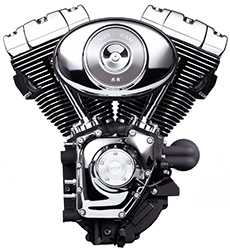

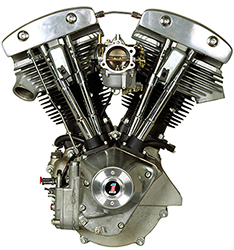
M8 Turbos
Twin Cam
Turbos
Evolution Turbos
Shovelhead
Turbos
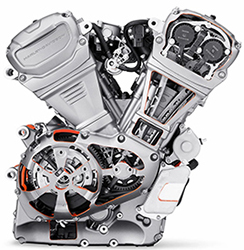
V-Rod Turbo
Note: We only do these by
appointment at RB Racing. Takes time. Prepaid. Expensive. No
Motor work.
We were contracted to make a V-Rod Turbo...The customer returned
at a later date and rode our 126" Turbo Road Glide.It so scared
the shit out him when he hit 3rd gear on a freeway on-ramp that
he pulled over and parked the Glide.
He decided right then against the turbo after we made it. There
are multiple models of this short-lived bike...So they are only
done here at RB Racing.
Numerous people have called, mostly sharp shooters, asking us to
justify our existence on this planet. We don't play those
games.. We tell everyone the same thing... "Only done here.
Prepaid for what we ask. Must be scheduled...And finally we do
not sell DIY parts"
V-Rod Turbos...2014
pictured
Note: These are high
compression 11.5:1 motors. Compression must be reduced.
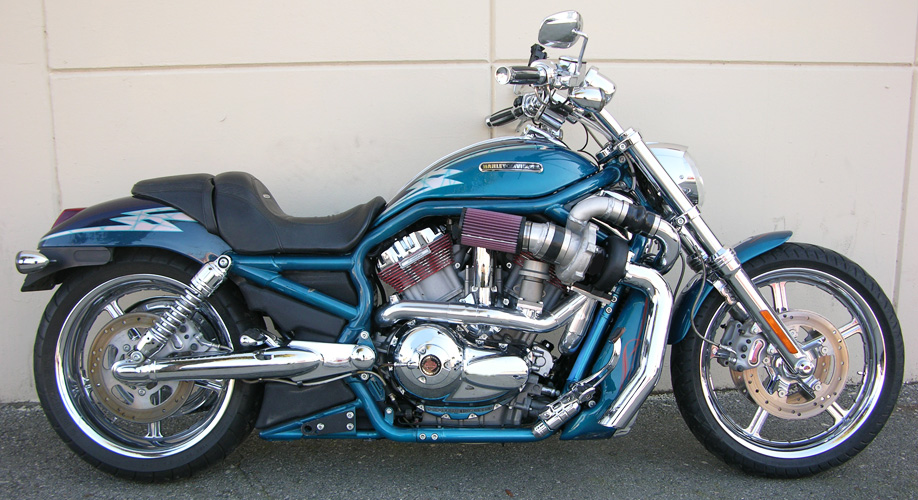
Right
side view RB Racing V-Rod Turbo. BoostMaster Billet wastegate
(rider adjustable). 2 1/2" Chromed exhaust. 360 hp
turbocharger.

We sort
of left V-Rods alone as we are always busy and new projects
take an awful lot of time and resources if you want to do
things right. More than a decade after Willie G and Porsche
came up with a 60 degree street bike and after the failed
water buffalo road race VR1000 we decided to turbo the V-Rods.
Time, money, resources. Left side view showing ram air 360 hp
intercooler. Horn and clock switch get relocated. No need to
cut any coolant lines.
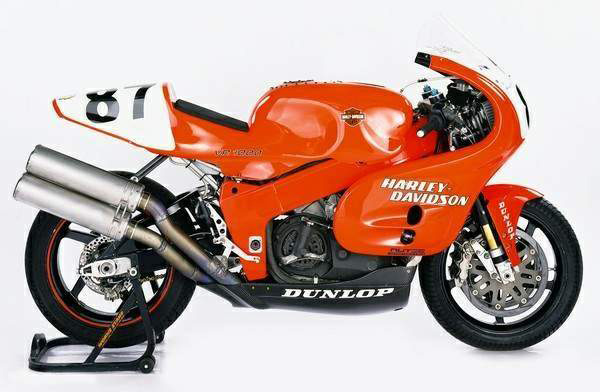
The
VR1000 came to the show heavier than the competition and with
less power. This is not a formula for success. The V-Rods are
sort of the same way. They are high RPM 4 valve engines that
are pretty quick but not real fast...and they are a bitch to
work on or hop-up... Harley's answer to the metric crowd.
There is no end to the hop-up route on the big twins, but
nowhere to go on the V-Rods.
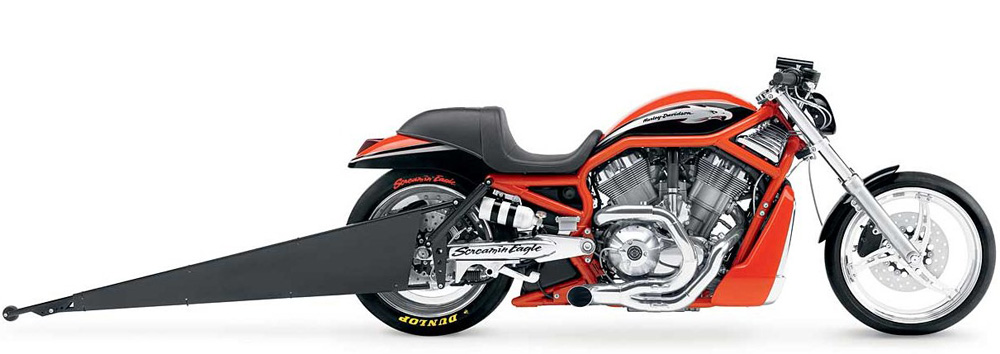
Harley's answer to the slow and heavy formula was to crank out
a factory drag bike, the V-Rod Destroyer, that had about 165
hp and ran 9 second quarter miles. We'd go to the races
working on our friend Carl Pelletier's Top Fuel Harley and
gaggles of these would show up..mostly Dealer owned. A few
times some V-Rod Turbos by two other manufacturers would show
up and run in the 11's. That was pretty embarrassing. There
really isn't any point in showing up with a turbo if you can't
outrun a normally aspirated V-Rod Destroyer. A 165 hp turbo
that only makes boost high in the rpm range with a small turbo
has no chance against the Destroyer. Tuck your tail between
your legs and go hide.
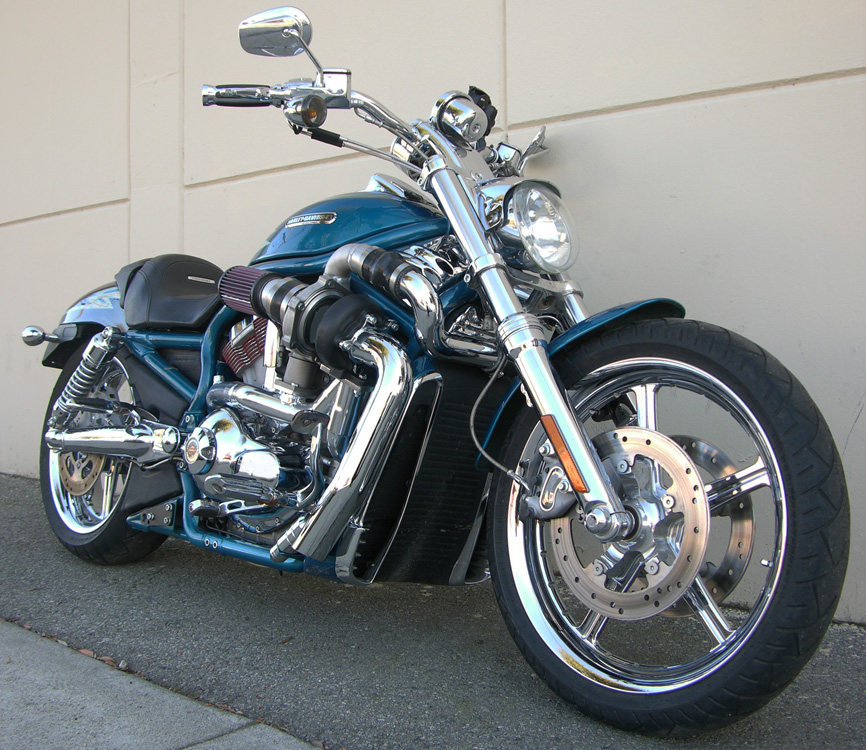
RB Racing
V-Rod Turbo: RB Racing uses 360 hp turbos, not 160 hp turbos.
Our turbos move a lot of air at low pressure ratios and are
rider adjustable. You want to be able to cruise at high speed,
not be under boost, but go into boost instantly when you roll
on the throttle. You can adjust the boost from the handlebars
while you are driving...5 to 25 psi. No muffler goes inside
your legs.
V-Rods
are sort of annoying at speed as a fast cruise has the motor
spinning along at 5000 rpm like a Japanese sport bike. We
recommend regearing the bike with a chain drive and gearing it
taller and use the turbo's torque to keep the cruising rpms
down and the mileage up.
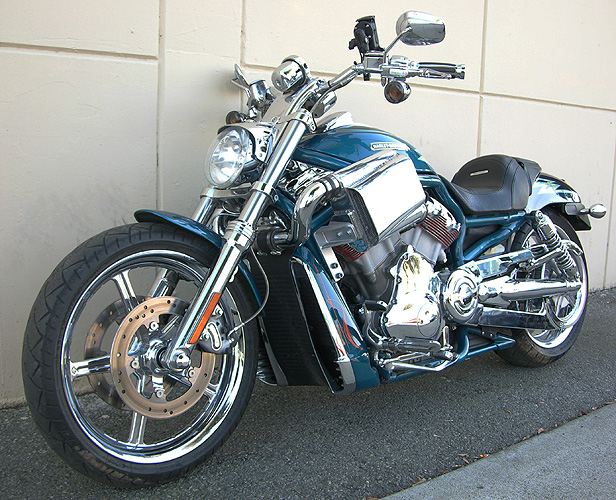
These are
strange bikes. The bike is a narrow V-Twin but the bars and
the pegs stick way out in the wind. We put on 360 hp worth of
intercooler on the V-Rod but had to use ram air to keep the
bike narrow. Dating back to 1985 with our work on BMW K100's
we knew the intercooler could not block the radiator. If you
do not drop the charge temperatures you simply cannot run
higher boost levels.
Fixtures, R&D
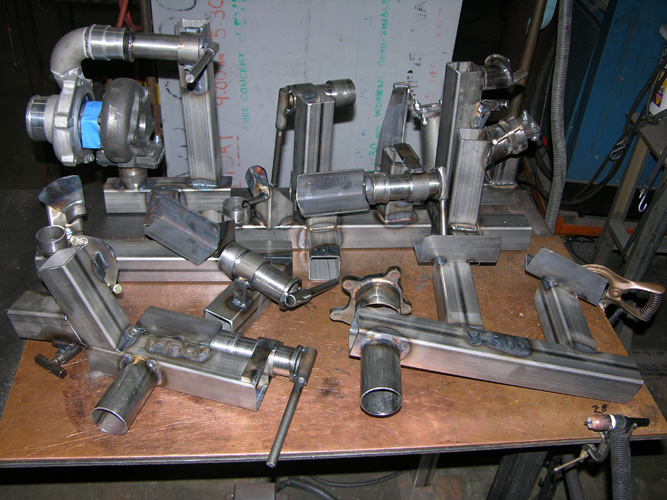
After 35 years of turbocharging
motorcycles we have come to some conclusions:
1. Unless it is really, really, fast don’t do it.
2. The fuel delivery system has to be engineered in advance.
3. Exhaust manifold design is critical for tuning, performance,
and reliability.
4. Inlet manifolding and plenum design is just as critical as #3
above.
5. Large capacity charge cooling is mandatory.
6. Oil feed and scavenge must be planned before fabrication
begins.
7. Parts must be so well designed that long term reliability is
insured.
8. It takes many years and thousands of hours and endless testing
to do 1-7 above.
9. Most people do not appreciate 1-8 above.
Details:
FAST: We only use turbos that flow large CFM at low pressure
ratios. Nothing we do has the capacity less than 3x OEM
Horsepower. The defunct V-Rod Destroyers made about 165 hp and ran
9 second quarter miles. We give you 300+ horsepower
capability...that’s double what a Destroyer had.
Fuel System
FUEL: RB Racing V-Rod Turbo Inlet Sytem; V-Rods are Fuel
limited even with larger Delphi injectors. 85% duty cycles with
the OEM 4.81 gram injectors limit the bike to 130 hp. Taking
the injectors to full static and limiting the boost you can get to
160 hp with lower B.S.F.Cs. No amount of Screaming Eagle Super
Tuner (SEST) or TTS Master Tune software entries can cover the
horsepower we generate.
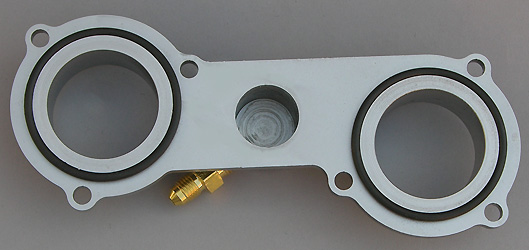
RB Racing supplies Bosch Racing injectors system to cover boost
horsepower from 130 to 360 horsepower. The plenum uses
O-Ring seals on each throttle body and the Idle Air Control port
is routed to the plenum, not left to the open air. The stock paper
gasket was not designed for boost. A Blow off valve incorporated
into the plenum prevents compressor surge. Your Delphi system is a
1 Bar system and realistically cannot be programmed for 2 to 3 Bar
operation. We supply 2 or 3 Bar MAP sensors and special racing
fuel pumps for 360 Hp applications. It is better to keep all the
sophistication of the stock ecm.
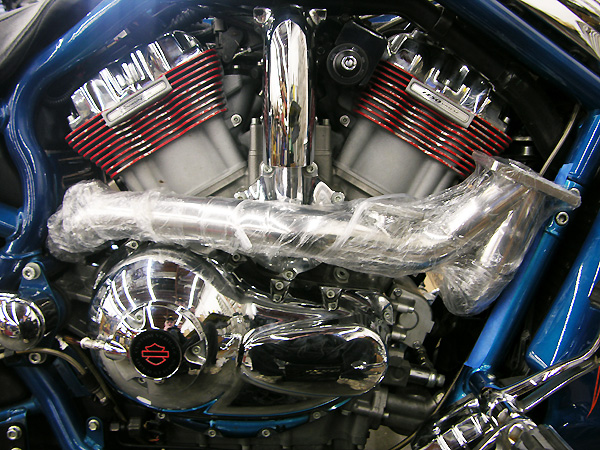
EXHAUST: RB Racing’s V-Rod Turbo exhaust manifold has full 2”
ceramic coated primary tubes, with a high velocity merge collector
that is a piece of art. We do not do simplistic designs that have
no tuning, with primary tubes that literally fire into each other.
These are nothing better than “log” manifold. We keep it wrapped
in plastic during the installation. It is ceramic coated. Tape on
the frame minimizes scratches.
INLET SYSTEM: Inlet volume is defined as the swept volume from the
turbo compressor discharge to the engine's inlet valves. RB
Racing’s V-Rod inlet system has sufficient volume for the large
bore pistons to breathe freely unlike cheap designs that actually
“starve” the engine and stall the compressor due to inelasticity
of the small plenum volume. RB Racing’s V-Rod inlet volume from
the turbo discharge to connector tubing to the intercooler to the
inlet plenum to the inlet valves is a multiple of the engine's
volume...not one "coke can sized" plenum.
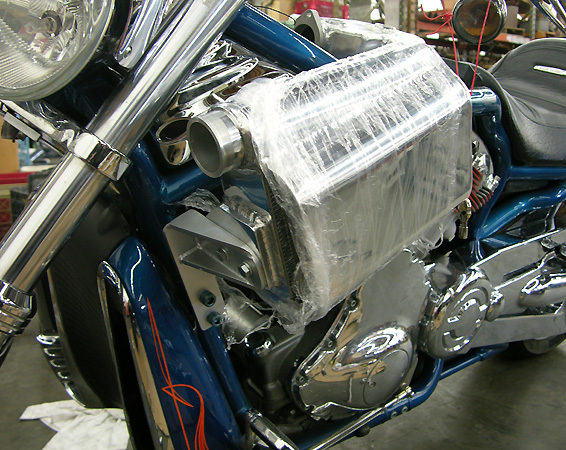
CHARGE COOLING: RB Racing employs a 360 hp rated V-Rod intercooler
with ram air cooling, not an useless small intercooler turned
sideways to the airstream simply acting as a heat sink, not as an
intercooler. The intercooler is tucked in tight so as not to
interfere with the rider. We keep it wrapped in plastic during the
installation. It is polished and clear ceramic coated. With the
cool air entering the plenum from the left side you do not have to
cut radiator lines.
OIL SYSTEM: You do not have to alter or modify your engine's dip
stick for a turbo drain. No drilling or taping required for feed
or drain lines.
RELIABILITY: We routinely spent a year or more in development.
Unless it qualifies as a daily driver we don’t do it. Unless you
can go on trip with it we don’t do it.
ELECTRONICS: The stock Delphi controller is a very sophisticated
engine controller that should be left in place and supplemented by
our 2 and 3 Bar Map
sensors and Bosch Racing Fuel Injectors for most street
and high performance use. The same strategy we use on our big twin
Evo and Twin Cam turbos. Stock injectors are horsepower limited.
Changing the efi system to another ecu/ecm involves a number of
drawbacks, the most important being is that you negate thousands
of manhours of Delphi development. We keep it simple









